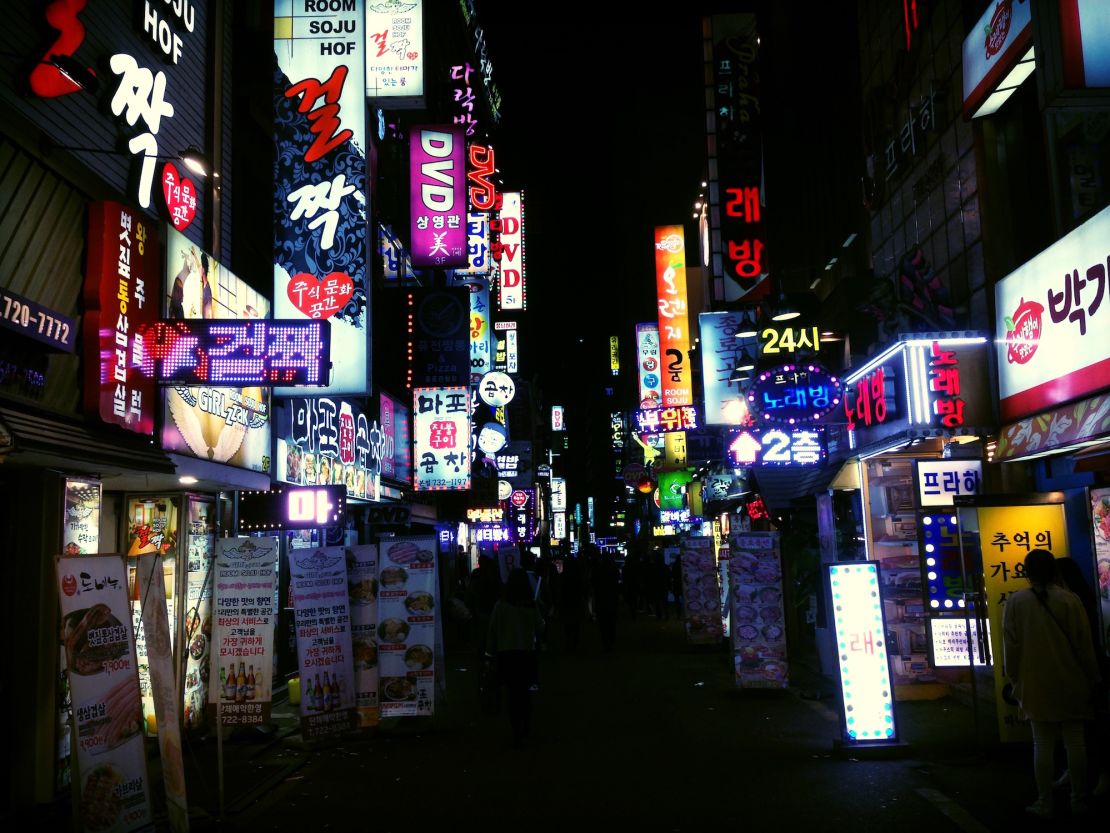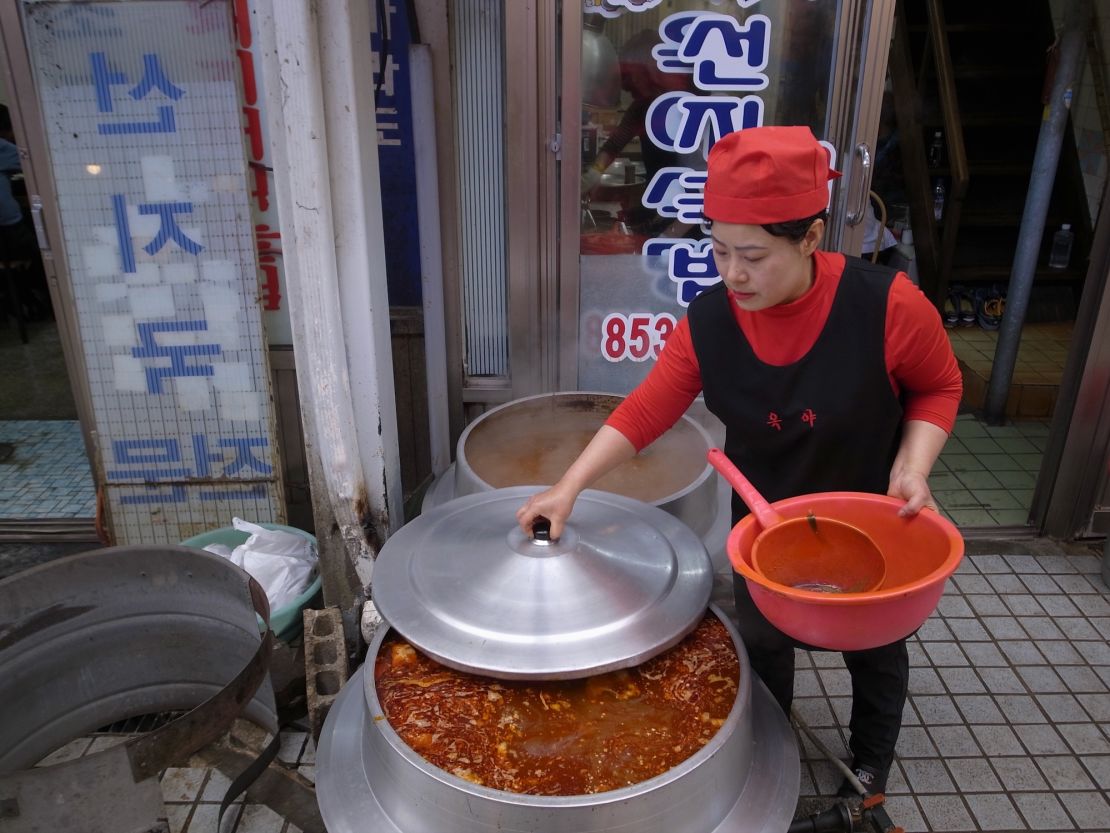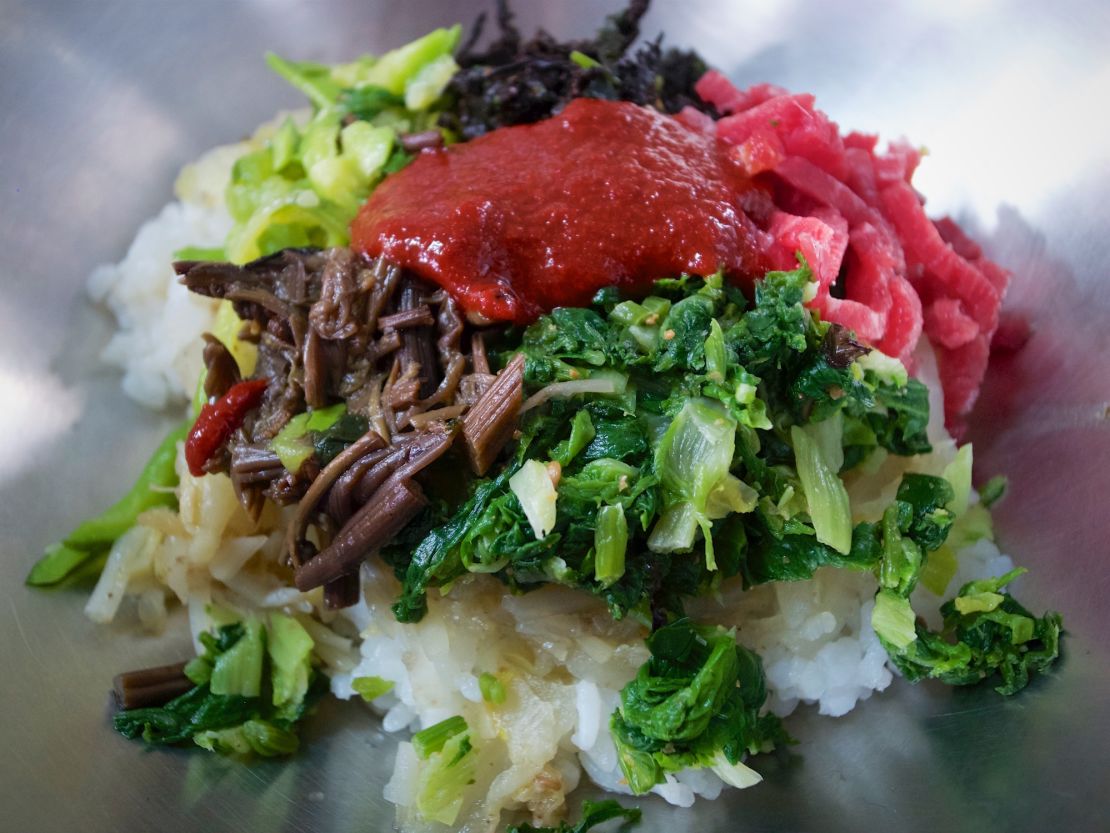Story highlights
Graham Holliday's new book "Eating Korea: Reports on a Culinary Renaissance" chronicles the country's unique food culture
Graham Holliday has made a career out of eating. The author of “Eating Viet Nam” recently published a new book, this time chronicling his culinary adventures through South Korea.
“Eating Korea: Reports on a Culinary Renaissance” explores the country’s rich food history and evolving contemporary culinary scene.
Holliday shares 10 of his favorite Korean foods with CNN Travel – covering everything from 3-year-old kimchi in Seoul to Busan’s unusual type of bibimbap – and offers a few tips on where to find them.
1. Mugeunji

Hanokjib Kimchi-jjim, in the Seodaemun district of Seoul, is minimally decorated, aside from framed certificates, awards, news clippings, menus and pictures – all pinned haphazardly to the wall.
The restaurant serves one thing: kimchi.
Usually made from cabbage and radish, kimchi that has fermented for six months or more is known as mugeunji and the mugeunji at this place is an exquisite 3 years old. A thick, sour, garlic-laced miasma greets you as you enter the traditional Korean-style house.
The room shudders with the smell, as a long, bloody rag of kimchi spread out like a dead octopus on an oval plate is placed on your table.
Hanokjib Kimchi-jjim, 178 Naengcheon-dong, Seodaemun-gu, Seoul, South Korea; +82 02 362 8653
2. Dak galbi
Dak galbi is a stir-fried chicken dish from the northeastern city of Chuncheon.
Cooked on a large, round hot plate that’s built into the table, the dish includes cabbage, rice cakes, onions, coarsely chopped leeks and sweet potatoes – bathed in a hot, slightly sweet sauce made of red pepper paste, soy sauce and turmeric.
Dak galbi is special – it’s a mess, a mistake that works.
After it has been cooked and stirred, it looks like a building site where everything Korean that’s edible got dumped inside, turned upside down and rattled about.
Dak galbi is a glorious dish and Chuncheon is the place to eat it.
1.5 Dak Galbi, 77 Human-ro, Hupyeong 3 (sam)-dong, Chuncheon, South Korea; +82 33-253-8635

3. Kalguksu
Geum-Ak Kalguksu is a tumbledown restaurant down an alley in downtown Gangneung, on South Korea’s east coast.
It’s a one-dish joint, and that dish is kalguksu – a thick, fiery noodle soup that drips delicious violence. Diners sit in 6- by 9-foot cabins with rickety sliding wooden doors. The walls and roof were once white, but now every inch of space is covered in graffiti.
Rough-cut, slimy, thick buckwheat noodles poke through a surface speckled with seaweed and sesame seeds.
Old, basic restaurants like Geum-Ak Kalguksu used to be everywhere in Korea but they are fast disappearing today.
Geum-Ak Kalguksu, 12-6, Daehak-gil, Gangneung, Gangwon-do, South Korea
4. Seonji gukbap

Mid-morning, a line forms outside small, family-run Okya restaurant inside the Sin-Sijang market in the central-eastern city of Andong.
The two vats of soup inside the kitchen turn like a furious, roiling sea, swathing the cramped, packed restaurant with a mighty spicy meat mist. There’s no need to order, as there is only one dish.
Seonji gukbap – commonly referred to as a “hangover stew with clotted cow’s blood” – comes with four side dishes, rice, minced garlic and chili powder.
It’s a wholesome, beefy, slightly sweet and thoroughly nourishing dish.
Okya restaurant, 307 Ogya-dong, Andong, Gyeongsangbuk-do, South Korea; +82 54 853 6953
5. Kkomjangeo
There is a row of simple sheds at one end of the Jagalchi fish market in the southeastern city of Busan.
Almost every stall sells kkomjangeo, or grilled hagfish. Cooked alive, unsurprisingly, the hagfish convulse violently as they sizzle on the grill.
This kind of fish wasn’t always eaten in Korea. It was the Japanese who harvested it when they colonized Korea in 1910.
They used the skin to make shoes and discarded the meat. Hungry Busanites gathered the meat, spiced it up, ate it – and a Busan dish was born.
Jagalchi Market, 52 Jagalchihaean-ro, Nampo-dong, Jung-gu, Busan, South Korea; +82 51 713 8000
6. Jinju bibimbap

To the west of Busan, Jinju city is home to a variant of the globally popular bibimbap. It is yukhoe – raw strips of julienned beef – that distinguishes Jinju bibimbap from the other iterations of this South Korean staple.
It comes in a large, shiny, stainless-steel bowl, filled with a base of steamed rice, yukhoe, mung bean jelly, steamed bracken, dried seaweed gochujang (a red chili paste) and a few side dishes.
All variations of bibimbap follow the same baby food principle: sling everything in a bowl, stir it up, spice it up, and spoon it down.
Cheonhwang Sikdang, in the central market area, is the oldest and most popular bibimbap restaurant in Jinju.
Cheonhwang Sikdang, 3 Chokseok-ro207beon-Gil, Jinju, Gyeongsangnam-do, South Korea; +82 55 741 2646
7. Gomtang
The White House restaurant in the town of Naju, in South Korea’s southeast, belongs to a disappearing, yet gloriously alive, breed of restaurants.
It’s a stubborn old boot that has rejected change. Beef steam hisses from the entrance to the kitchen, where seven women in blue aprons work the gomtang soup vats, rice steamers, cutting boards, kitchen sink and serving trays.
An ajumma (middle-aged woman) with rubber gloves, a perm, an uninviting glare and a shower cap ladles the soup from one of two humungous, three-foot-wide vats.
The beef in gomtang is cooked very simply and slowly, resulting in a clean beef broth. Inside the hot stone bowl, the soup contains beef brisket, rice, spring onion, and thin, noodle-like egg strips.
White House (???), 48-17 Jungang-dong, Naju, Jeollanam-do, South Korea; +82 61 333 4292
8. Mom-guk
The food of Jeju island, off the southern coast, is quite different from that found on the mainland. There are more fresh vegetables, and almost no spice at all.
The island is home to its own unique dishes, including mom-guk – a simple pork and seaweed soup. Mom-guk seems to writhe like a trapped serpent inside the bowl as it bubbles, squirms and hisses in front of you.
It is an unimaginable soup. Steamy green vapors rise like seaborne butterflies from the cauldron on your table. It’s emerald, complex and divine. And, for me at least, it was the single biggest revelation on my journey around Korea.
Jeju Tosok ?? ??, Ido-1dong, Bosung Traditional Market (City Hall), Jeju City, South Korea; +82 64 758 8948
9. Kongnamul gukbap

The southwestern city of Jeonju is known to have the best food in all of South Korea. One of its most famous dishes is kongnamul gukbap, a bean sprout soup.
Hyundai-ok is one of the more popular restaurants that serves this local specialty.
It comes in a stone bowl and fizzes with a curative bean sprout fog as it is placed upon your table. In a small metal bowl next to the soup are two eggs, just ever so slightly cooked.
On a wooden condiment platter, there is a small dish of tiny shrimp, some cabbage kimchi and a bowl of salty fermented octopus.
Travelers suffering from a hangover may want to visit for breakfast – kongnamul gukbap is celebrated for its restorative properties.
Hyundai-ok restaurant, Nambu Market 2-74, Wansan-gu, Jeonju, Jeollabuk-do, South Korea; +82 63 228 0020
10. Nakji bokkeum
Nakji bokkeum – stir-fried octopus – is one of South Korea’s spiciest dishes.
It is believed to have been invented in a tavern in the Mugyo-dong district of Seoul in 1965 by a grandmother named Park Mu-sun.
Nakji bokkeum quickly caught on. Word spread, and a national favorite was born. Now part of the modern-day Myeongdong district, Mugyo-dong was the most fashionable area in Seoul at the time.
Still today, if you poke around enough, you can still find some of those old nakji bokkeum joints in Myeongdong.
Myeongdong Halmae Nakji, 31-7 Myeongdong-2 ga, Junggu, Seoul; +82 02 757 3353







